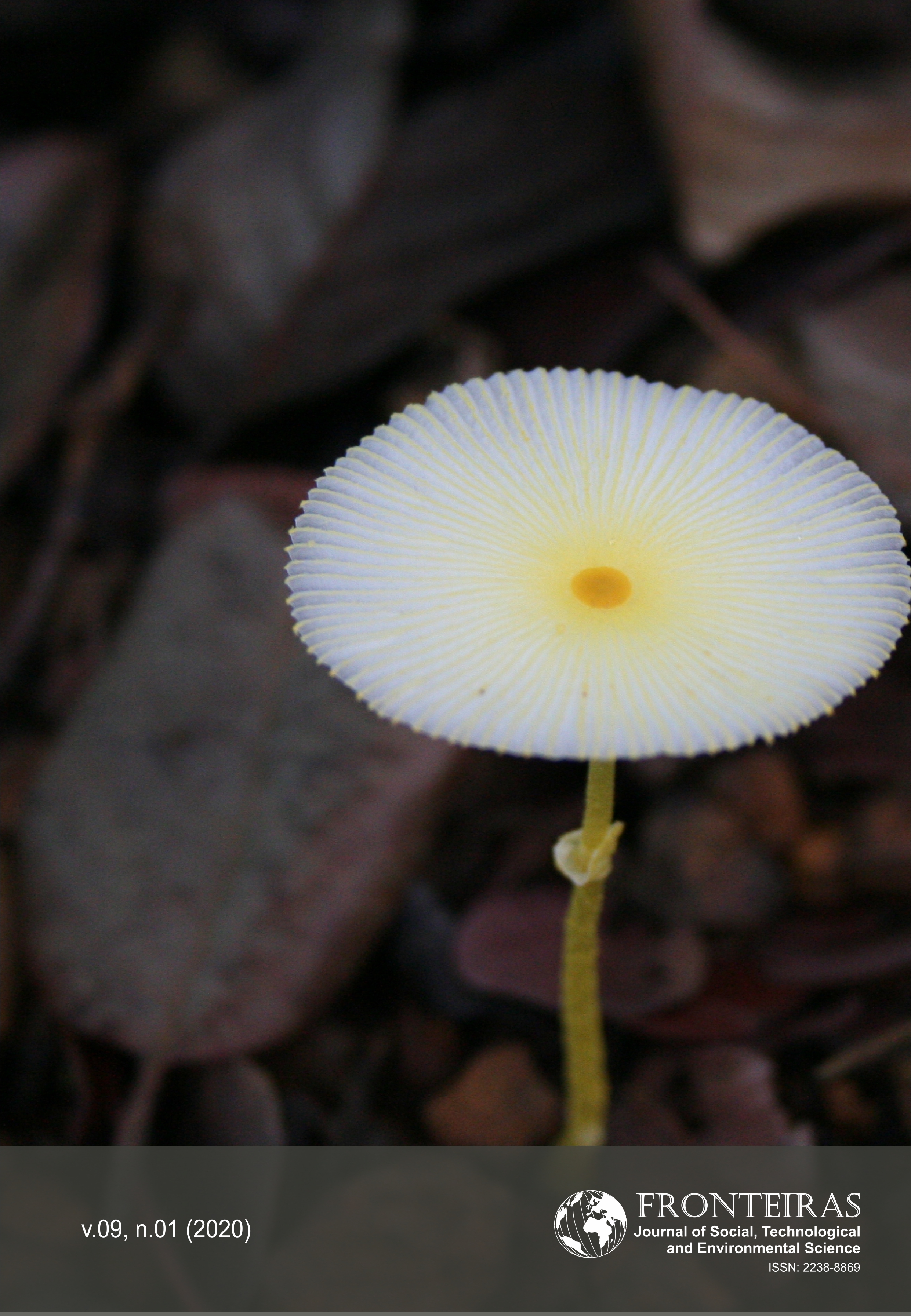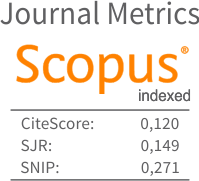Maize Hybrids Affect a Quantity of Ethanol Produced in the Closure of Centro-Oeste Paulista
DOI:
https://doi.org/10.21664/2238-8869.2020v9i1.p424-438Keywords:
Zea mays, Saccharomyces cerevisiae, Bioenergy, Sucroenergetic SectorAbstract
The Brazilian sugarcane industry has been using corn for the production of ethanol because it has a 120 day vegetative cycle, cultivation in sugarcane renovation areas, and its grains can be stored for long periods of time. In this sense, the objective of the research was to evaluate the agronomic characteristics of three corn hybrids, and the grain processing reflexes for ethanol production. The experiment was installed in the experimental farm of the Sacred Heart University (USC) located in the municipality of Agudos in the State of São Paulo in the 2016/2017 harvest. The experimental area was 8000m2, with 16 plots of 450m2 each. Hybrids 2B810PW, 2B633PW and 2B587PW were used. The planting was carried out in October 2016 and the harvest occurred at 150 days after sowing (d.a.s.). During development of the culture (45, 75, 90 and 110 d.a.s.) the biometric parameters were evaluated. The grains were harvested mechanically, ground and immersed in water, adding the α-amylase enzyme, giving the must. The musts were submitted to inoculation by industrial yeast BG-1. The hybrids 2B587PW, 2B633PW and 2B810PW resulted in 3.65, 3.74 and 2.94 t ha-1 of grains, respectively. Average values of 430 L of ethanol recovered per processed were observed. It is concluded that the hybrid 2B633PW is the most suitable for the cultivation in the center-west of São Paulo state, because results in higher grain yield. The hybrids show differences in fermentative performance of BG-1 yeast, and the 2B810PW results in higher fermentation efficiency and the amount of ethanol produced per ton of processed corn.
References
Aguiar, Adriano Tosoni da Eira, Charleston Gonçalves, Maria Elisa Ayres Guidetti Zagatto Paterniani, Maria Luiza Sant’Anna Tucci, and Carlos Eduardo Ferreira de Castro. 2014. “Boletim 200 - Instruções Agrícolas Para as Principais Culturas Econômicas.”
Amorim, HV, LC Basso, and DG Alves. 1996. Processos de Produção de Álcool: Controle e Monitoramento. Piracicaba.
Balat, Mustafa, Havva Balat, and Cahide Öz. 2008. “Progress in Bioethanol Processing.” Progress in Energy and Combustion Science 34 (5): 551–73. https://doi.org/10.1016/j.pecs.2007.11.001.
Barbosa, José Carlos, and Walter Maldonado Júnior. 2015. Experimentação Agronômica & AgroEstat: Sistema Para Análises Estatísticas de Ensaios Agronômicos.
Basso, Luiz Carlos, Thiago Olitta Basso, and Saul Nitsche Rocha. 2011. “Ethanol Production in Brazil: The Industrial Process and Its Impact on Yeast Fermentation.” In Biofuel Production-Recent Developments and Prospects. InTech. https://doi.org/10.5772/17047.
Cardoso, Milton José, Hélio Wilson Lemos de Carvalho, Leonardo Melo Pereira Rocha, Cleso Antônio Patto Pacheco, Paulo Evaristo de Oliveira Guimarães, and Lauro José Moreira Guimarães. 2014. Adaptabilidade e Estabilidade de Cultivares Comerciais de Milho No Meio-Norte Brasileiro.
Chavan, SM, A Kumar, and SJ Jadhav. 1991. “Rapid Quantitative Analysis of Starch in Sugar Cane Juice.” International Sugar Journal 93: 56–59.
CONAB, Companhia Nacional de Abastecimento. 2019. “Acompanhamento Da Safra Brasileira: Grãos - Safra 2018/19 – Sexto Levantamento.”
Costa, Gustavo HG, Igor S Masson, Lidyane A de Freita, Juliana P Roviero, and Márcia JR Mutton. 2015. “Reflexos Da Clarificação Do Caldo de Cana Com Moringa Sobre Compostos Inorgânicos Do Açúcar VHP.” Revista Brasileira de Engenharia Agrícola e Ambiental 19 (2): 154–59. https://doi.org/10.1590/1807-1929/agriambi.v19n2p154-159.
Cruz, JC, IAF Perreira, RC Alvarenga, MMG Neto, JHM Viana, MF Oliveira, WJR Matrangolo, and MRF Alburquerque. 2010. “Cultivo Do Milho.”
Devantier, Rasmus, Sven Pedersen, and Lisbeth Olsson. 2005. “Characterization of Very High Gravity Ethanol Fermentation of Corn Mash. Effect of Glucoamylase Dosage, Pre-Saccharification and Yeast Strain.” Applied Microbiology and Biotechnology 68 (5): 622–29. https://doi.org/10.1007/s00253-005-1902-9.
Fernandes, Antonio Carlos. 2003. Cálculos Na Agroindústria de Cana-de-Açúcar. Piracicaba.
Ferreira, Osania Emerenciano. 2015. “Produção de Etanol a Partir de Sorgo Sacarino Com Tratamento Enzimático.”
Folin, Otto, and Vintila Ciocalteu. 1927. “On Tyrosine and Tryptophane Determinations in Proteins.” The Journal of Biological Chemistry 73 (2): 627–50.
Galvão, JCC, A Borém, and MA Pimentel. 2015. Milho: Do Plantio a Colheita. Viçosa.
Hall, Jeremy, Stelvia Matos, Liv Severino, and Napoleão Beltrão. 2009. “Brazilian Biofuels and Social Exclusion: Established and Concentrated Ethanol versus Emerging and Dispersed Biodiesel.” Journal of Cleaner Production 17 (November): S77–85. https://doi.org/10.1016/j.jclepro.2009.01.003.
IBGE, Instituto Brasileiro de Geografia e Estatística. 2017. “Número de Estabelecimentos Agropecuários, Quantidade Produzida e Área Colhida, Por Produtos Da Lavoura Temporária.” https://www.ibge.gov.br/estatisticas/economicas/agricultura-e-pecuaria/21814-2017-censo-agropecuario.html?edicao=21858&t=resultados.
ICUMSA, Internattional Commission for Uniform Methods of Sugar Analysis. 2017. ICUMSA Methods Book Supplement 2017.
Landau, Elena Charlotte, Paulo César Magalhães, and Daniel Pereira Guimarães. 2019. “Relações Com o Clima: Milho.” Agência Embrapa de Informação Tecnológica (AGEITEC). 2019.
Lozano, Eduardo do Valle, Letícia Murador Blanco, Giovanni Uema Alcantara, Lucas Conegundes Nogueira, Sandro Ciaramello, and Gustavo Henrique Gravatim Costa. 2018. “Effect of Application of Flowering Inhibitor on Sweet Sorghum.” African Journal of Agricultural Research 13 (4): 196–201. https://doi.org/10.5897/AJAR2017.12902.
Macri, Rita de Cásssia Vieira, Gustavo Henrique Gravatim Costa, Nayara Abrão Montijo, Aline Ferriera Silva, and Marcia Justino Rossini Mutton. 2014. “Moringa Extracts Used in Sugarcane Juice Treatment and Effects on Ethanolic Fermentation.” African Journal of Biotechnology 13 (42): 4124–30. https://doi.org/10.5897/AJB2014.14025.
Manochio, C., B.R. Andrade, R.P. Rodriguez, and B.S. Moraes. 2017. “Ethanol from Biomass: A Comparative Overview.” Renewable and Sustainable Energy Reviews 80 (December): 743–55. https://doi.org/10.1016/j.rser.2017.05.063.
Masson, Igor dos Santos, Gustavo Henrique Gravatim Costa, Juliana Pelegrini Roviero, Lidyane Aline de Freita, Miguel Angelo Mutton, and Márcia Justino Rossini Mutton. 2015. “Produção de Bioetanol a Partir Da Fermentação de Caldo de Sorgo Sacarino e Cana-de-Açúcar.” Ciência Rural 45 (9): 1695–1700. https://doi.org/10.1590/0103-8478cr20130549.
Messias, RC, LC Nogueira, and GHG Costa. 2016. “Compostos Fenólicos Afetam a Levedura Durante o Processo Fermentativo.” Ciência & Tecnologia, 1–5.
Miller, G. L. 1959. “Use of Dinitrosalicylic Acid Reagent for Determination of Reducing Sugar.” Analytical Chemistry 31 (3): 426–28. https://doi.org/10.1021/ac60147a030.
Mosier, NS, and KE Lleleji. 2014. “How Fuel Ehtanol Is Made from Corn.” In Bioenergy: Biomass to Biofuels.
Neto, Cezar Faiad. 2014. “Usina Flex: Cana/Milho.”
Shioga, Pedro Sentaro, Antonio Carlos Gerage, Pedro Mário de Araújo, Rodolfo Bianco, Adriano Augusto de P. Custódio, and Alberto Sergio do Rego Barros. 2016. “Avaliação Estadual de Cultivares de Milho: Safra 2015/2016.”
Taiz, L, and E Zeiger. 2009. Fisiologia Vegetal. Artmed. Porto Alegre.
Thomas, K.C., S.H. Hynes, and W.M. Ingledew. 2001. “Effect of Lactobacilli on Yeast Growth, Viability and Batch and Semi-Continuous Alcoholic Fermentation of Corn Mash.” Journal of Applied Microbiology 90 (5): 819–28. https://doi.org/10.1046/j.1365-2672.2001.01311.x.
Unicadata. 2019. “Única: União Da Indústria de Cana-de-Açúcar.” 2019. http://www.unicadata.com.br/.
Downloads
Published
How to Cite
Issue
Section
License
This journal offers immediate free access to its content, following the principle that providing free scientific knowledge to the public, we provides greater global democratization of knowledge.
As of the publication in the journal the authors have copyright and publication rights of their articles without restrictions.
The Revista Fronteiras: Journal of Social, Technological and Environmental Science follows the legal precepts of the Creative Commons - Attribution-NonCommercial-ShareAlike 4.0 International. 


